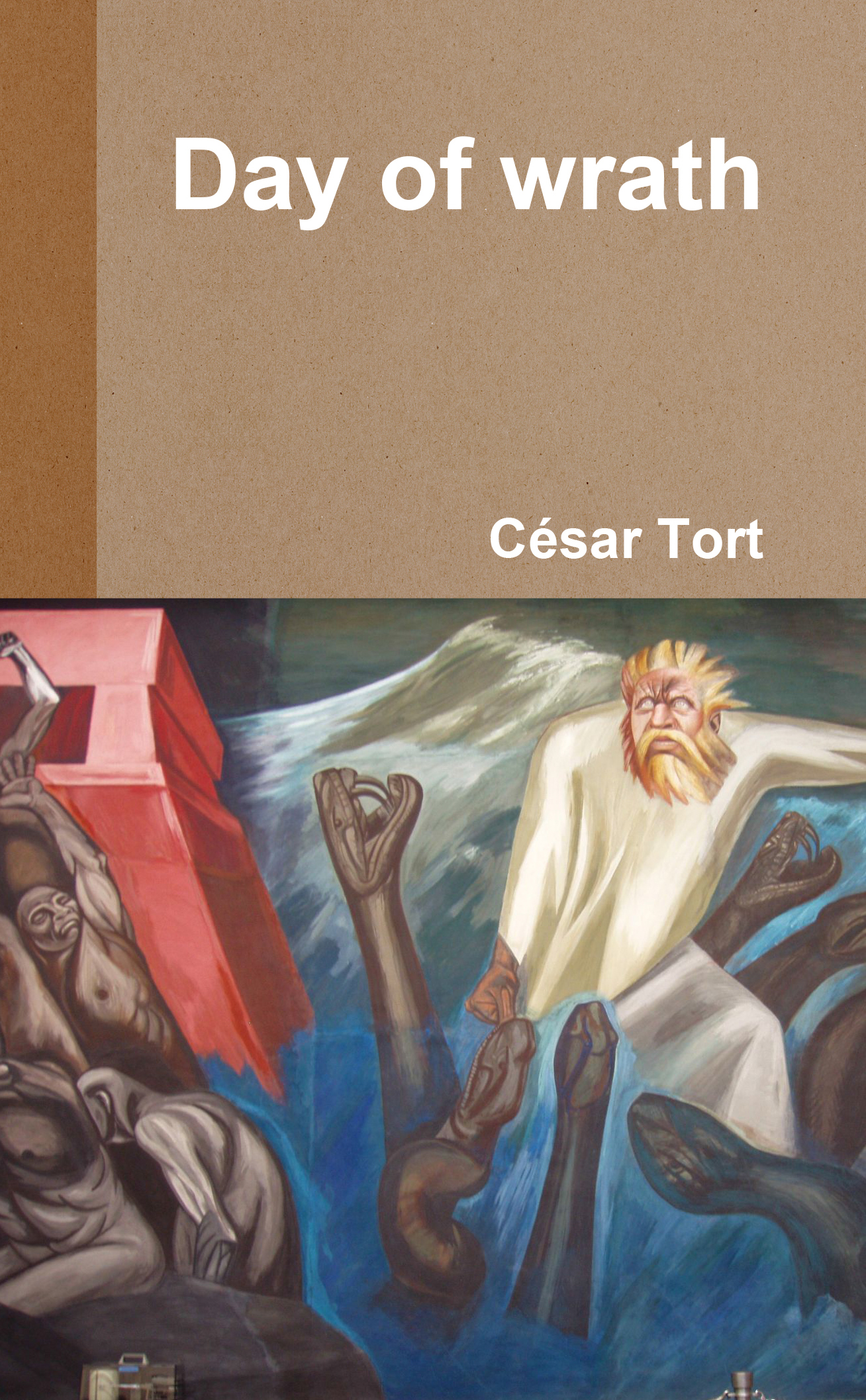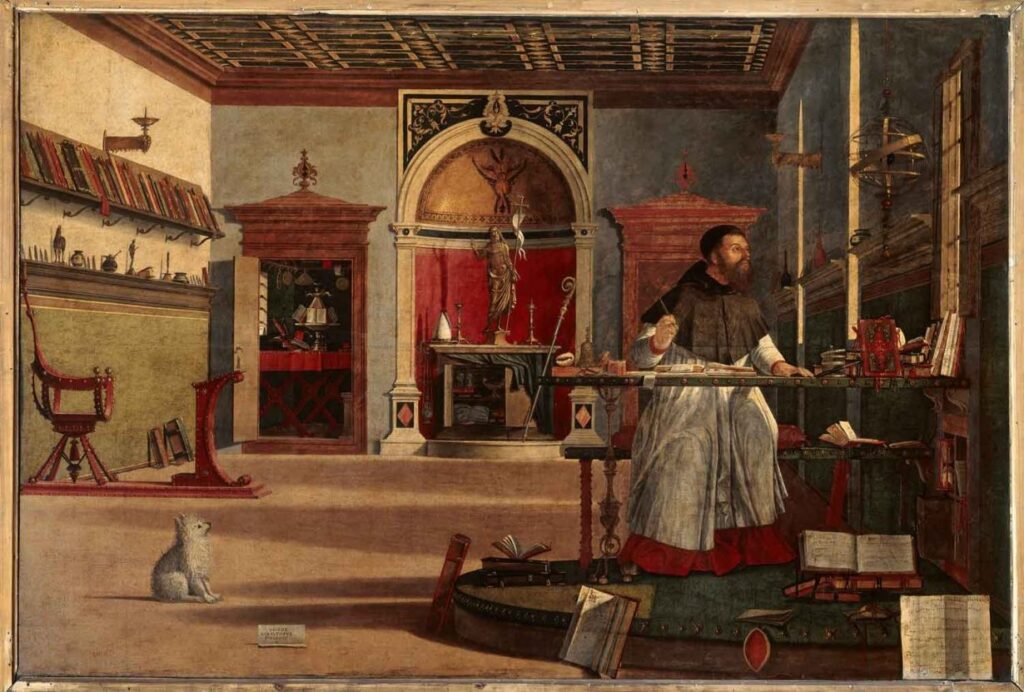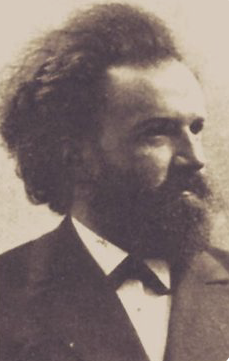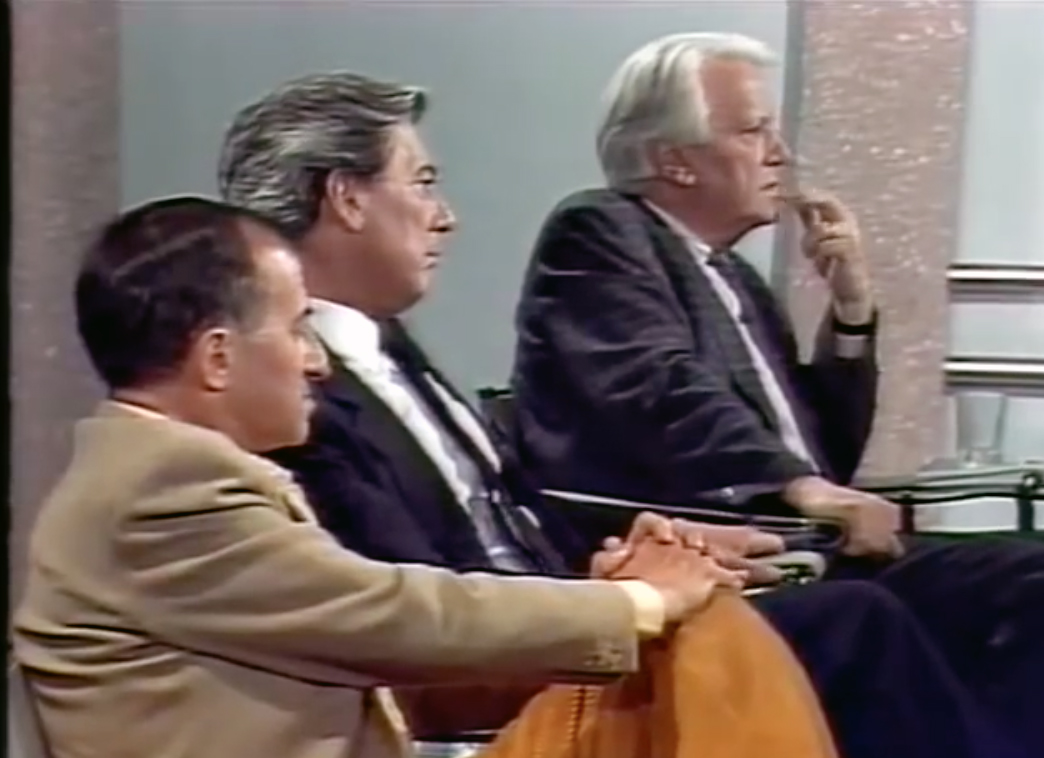A critique of Lloyd deMause

Henry Ebel said that in psychohistory Lloyd deMause stands out among his epigones as a locomotive single-handedly tugging those who publish in his journal: all of them moving only thanks to a motor that is not theirs. Ebel had left the congresses of psychohistory even before I knew of their existence. However, no sooner I initiated my study of deMause’s texts I realized that both Ebel and deMause were human. All too human…
A string of nonsensical claims
One of the most cockeyed theories of deMause is that the warfare fantasies of political leaders and the media in times of war reflect childbirth traumas. Even Alice Miller has criticized this specific theory.
Glenn Davis was one of the first disciples of deMause: a young man that committed suicide. When Davis was doing his oral examination for his doctoral thesis, Stanley Renshon, a member of the committee, fired a question at Davis about something he had written following deMause’s theories: “It says in your book, ‘Groups go to war in order to overcome the helplessness and terror of being trapped in a birth canal’.” People laughed all around the table. What I find it fascinating is that, decades after Davis’ suicide, deMause still does not perceive the bad reputation that this sort of theories that he originated cause in his most serious readers.
In the issue of Spring of 2007 the Journal of Psychohistory published “The Conquistador and the Virgin Mary” by Madeleine Gómez. The article is an authentic string of nonsensical claims. According to this psychohistorian, in the Spanish conquest of the empires Mexica and Inca “the birth trauma was reenacted with few variations,” and on the next page she adds that the endeavor to conquer the seas in each exploration voyage is but “attempts to surmount the birth trauma.” After putting Cortés and the rest of the Spaniards as the villains of the story, Madeleine informs us that in the war for Tenochtitlan “the drumbeats in the air” can “easily be associated to the fetal heartbeat.” And writing on the denunciation by Francisco de Aguilar about the Indian sacrifices, she interprets that “it was easier to project upon the other…” That is, if the chronicler is shocked of the sacrifices, that only conceals the projections of his own European wickedness. Summarizing her interpretation of the Conquest, Madeleine writes: “There was arduous time spent in a womb-like mothership, with subsequent rebirth upon reaching shore.” These analytic interpretations remind me the worst nonsense of Freud recounted in my second book. The psychohistorian concludes that the Spaniards were “abusive, devaluing of women and children” without mentioning in the slightest the sacrifices of women and children in Mesoamerica.
Something similar can be said of deMause’s own views about the human placenta, a theory that he calls “The fetal origins of history.” Such importance he gives to this theory that he devoted the cover illustration of his book Foundations of Psychohistory to it. In an email I asked deMause what did he mean with the eight-headed dragon that appears on the cover. DeMause informed me that there were seven heads (the drawing is ambiguous), “a placental beast” that he relates with terrifying unconscious motivations.
Satanic Ritual Abuse
The confusion of my feelings about deMause—lucubration such as those are psychobabble but deMause’s discoveries potentially could be a great lighthouse for the humanities—moved me to annotate each cognitive error I encountered in his legacy.
In 1994 deMause devoted more than a whole issue of his journal to one of the scandals originated in his country that destroyed the reputation of many innocent adults: claims of multiple victims, multiple perpetrators during occult rites in daycare centers for children, known as “Satanic Ritual Abuse” or SRA. I was so intrigued by the subject that, when I read deMause’s article “Why Cults Terrorize and Kill Children” I devoted a few months of my life to research the subject by reading, printing and discussing in the internet (texts that would fill up the thickest ring-binder that I possess). I also purchased a copy of a book on SRA published by Princeton University. My objective was to ascertain whether the man whom I had been taking as a sort of mentor had gone astray. My suspicions turned out to be justified, and even worse: by inviting the foremost believers of SRA to publish in his journal, deMause directly contributed to the creation of an urban myth.
The collective hysteria known as SRA originated with the publication of a 1980 sensationalist book, Michelle Remembers. Michelle claimed that Satan himself appeared to her and wounded her body, but that an archangel healed it. In the mentioned article deMause wrote credulous passages about other fantastic claims by Michelle, and added that the people who ran certain daycare centers in the 1980s put the children in boxes and cages “as symbolic wombs.” DeMause then speculated that “they hang them upside down, the position of fetuses” and that “they drink victim’s blood as fetuses ‘drink’ placental blood,” in addition to force children to “drink urine” and “eat feces as some do during birth.” DeMause also referred to secret tunnels that, he wrote, existed beneath the daycare centers: “They often hold their rituals in actual tunnels.” In fact, those tunnels never existed. In Evil Incarnate: Rumors of Demonic Conspiracy and Ritual Abuse in History, published in 2006, professor David Frankfurter wrote about deMause’s article: “In this way a contemporary writer can assemble a theory of ritual power to explain rituals that have no forensic evidence.”
This is the sort of thing that, in Wikipedia’s talk page about psychohistory, culminates with rants like the one that I rescued before another editor deleted it: “Don’t ever listen to this lunatic!” (deMause). It is true that Colin Ross is another gullible believer of SRA, as seen in a book that includes an afterword where Elizabeth Loftus disagrees with him. But since the mid-1990s the SRA phenomenon was discredited to such degree that sociologists, criminologists and police officials recognized what it was: a witch-hunt that led to prison and ruined the lives of many innocent adults. The movie Indictment: The McMartin Trial, sponsored by Oliver Stone and based on the most notorious of these hunts, sums up what I mean. Using invasive techniques for adults in the interrogation of little kids, the therapists of the McMartin case and other kindergartens obtained confessions full of fantasies: that the children had been abducted and taken through a network of tunnels to a hidden cave under the school; that they flew in the air and saw giraffes, lions and the killing of a rabbit to be returned to their unsuspecting parents in the daycare center. Kyle Zirpolo was one of the McMartin children. At twenty-nine in 2005, several years after the trial, Zirpolo confessed to reporters that as a child he had been pressured to lie:
Anytime I would give them an answer that they didn’t like, they would ask again and encourage me to give them the answer they were looking for. It was really obvious what they wanted… I felt uncomfortable and a little ashamed that I was being dishonest. But at the same time, being the type of person I was, whatever my parents wanted me to do, I would do.
In its heyday in the 1980s and early 90s, and in some ways similar to the Salem witch trials of 1692, SRA allegations reached grotesque levels. Proponents argued that an intergenerational group of families raised and kidnapped babies and children in an international conspiracy that had infiltrated the police and the professions of lawyers and doctors. Conspiracy theorists claimed that the FBI and the CIA were involved to discredit the veracity of the phenomenon. The allegations ranged from brainwashing and necrophilia, kidnapping, sexual abuse and child pornography, to black masses and ritual killings of animals and thousands of people every year. In the McMartin case they talked about children washed away when the perpetrator pulled the toilet chain taking them to hidden rooms where they would be molested; orgies in carwash business, and even flying witches. Needless to say, no forensic evidence was found to support such claims.
After the legal catastrophe that McMartin and several other cases represented, small children have not been questioned with the aggressive techniques that led them to fantasize so wildly. Nowadays there is no witch-hunting going on in the US, Britain or Australia caused by coercive techniques of fanatics that induce either false memories or outright lies (like Zirpolo’s) to please therapist and parent. However, despite the consensus in sociology and criminology of the new century—that the SRA was a case of moral panic from which there is no forensic evidence—deMause did not change his mind. The work that describes his thinking more broadly, The Emotional Life of Nations, published in 2002 and translated to German, contains a brief passage where he still regards SRA as something real.
Revisiting Zweig
I do not regret having compared deMause with Newton in a previous chapter. In the days when deMause disappointed me I watched the film The New World starring Colin Farrell and Christopher Plummer. It bothered me greatly the myth of the noble savage when Farrell’s voice in off says the following about an idyllic village of American Indians:
They are gentle, loving, faithful, lacking in all guile and trickery. The words denoting lying, deceit, greed, envy, slander, and forgiveness have never been heard. They have no jealousy, no sense of possession. Real, what I thought a dream.
At that moment Farrell plays with a few naked, happy Indian children outdoors. Of course, the historic reality was not so bucolic. Remember the photo of the little Indian boy swaddled by their parents in this book? This was a very common practice among those tribes. I felt Hollywood’s falsifying of reality so insulting that I left the theatre. Psychohistory also made me reconcile with Spain after almost a lifetime of hating her because of the conservative culture of my family which had hurt me so much as a boy. I owe much to deMause for having awakened me to the fact that the earlier Amerindian culture was incomparably more brutal, both for children and for adults.
Isaac Newton is the paradigm par excellence of scientific genius. He invented calculus, discovered the law of gravity, enumerated the laws of motion and showed that light is a mixture of colors. His findings not only revolutionized physics but also finally cracked down the pedestal on which Europe had Aristotle. Europe discovered her genius in Newton: a psychoclass comparable to that of the best Greek minds began to evolve in the 17th century.
The self-esteem that the European scientific mind recovered after Newton is difficult to overestimate. But very few know that after his third year of life Isaac’s mother abandoned him to the house of the grandmother: something that borders on what deMause calls the “abandoning mode” of childrearing. Newton’s biographers know that the child suffered this betrayal greatly. In order to burn his agony, in his early twenties he turned his mind into science. At twenty-six Newton had already discovered all of the mentioned above and even more. However, since at that time there were no survivor forums to vent the anger he felt for his mother and stepfather, Newton suffered a severe depression.
When he recovered he lost his mind: he dedicated the rest of his life to alchemy and fundamentalist theology. His manuscripts on these topics sum millions of words: incomparably more than the Principia Mathematica that Newton had written in his youth. He collected a hundred and fifty books on alchemy and tried to turn metal into gold. Newton “always believed in a personal God—nothing like the God of Spinoza—; in the literal narrative of Adam and Eve, the existence of the devil and in hell.” From this fundamentalist point of view Newton estimated the age of the world in some 3,500 years before his age and invested a huge amount of time to interpret the books of Daniel and the Revelation of John. He thought he had cracked the cipher of both books just as he had deciphered the laws of planetary motion. “It is sad,” writes Martin Gardner, “to envision the discoveries in mathematics and physics Newton might have made if his great intellect had not been diverted by such bizarre speculations.” When Newton died, it was found in his body large amounts of mercury: a poisoning resulting from his alchemical experiments.
However, the difference between Newton and deMause is considerable. Unlike Newton, deMause blended his brilliant Principia to his lunatic Alchimia under the same covers. DeMause’s major works where he did not collaborate with other authors, Foundations of Psychohistory, The Emotional Life of Nations and The Origins of War in Child Abuse are a mixture of historical science with pseudoscience; unprecedented discoveries about the history of the human soul with gross lunacies. Like Newton, deMause was terribly abused as a child. On page 136 of his journal, in the Fall 2007 issue he confesses that when his father beat him with a razor strap, as a way to escape he hallucinated that he floated to the ceiling. And on the first page of Foundations deMause writes: “I, like Hitler, have been a beaten, frightened child and a resentful youth. I recognize him in myself, and with some courage can feel in my own guts the terrors he felt…” The key phrase in this passage is “some courage,” not the full courage that I now discharge across my books. After that line of Foundations deMause’s soul disappears and his theories à la Newton appear: his brilliant insights eye to eye with his string of nonsensical claims.
From the point of view of the psychogenesis that he himself discovered, deMause’s main error is the error of psychoanalysts. Losing his mind was due to the fact that he failed to delve deeper into the wounds of his inner self. DeMause’s work, inspired by political sociology and analytical treatises, worships the intellect at the expense of autobiographical insight. One objective of this work [Hojas Susurrantes] is to break away from this intellectual limitation and unconfessional, academic literature.
Half a century before the publication of Julian Jayne’s book, Stefan Zweig wrote in Adepts in Self-Portraiture that when Western literature began with Hesiod and Heraclitus it was still poetry, and of the inevitability of a decline in the mythopoetic talent of Greece when a more Aristotelian thought evolved. As compensation for this loss, says Zweig, modern man obtained with the novel an approach to a science of the mind. But the novel genre does not represent the ultimate degree of self-knowledge:
Autobiography is the hardest of all forms of literary art. Why, then, do new aspirants, generation after generation, try to solve this almost insoluble problem?
[For a] honest autobiography […] he must have a combination of qualities which will hardly be found once in a million instances. To expect perfect sincerity in self-portraiture would be as absurd as to expect absolute justice, freedom, and perfection here on earth. No doubt the pseudo-confession, as Goethe called it, confession under the rose, in the diaphanous veil of novel or poem, is much easier, and is often far more convincing from the artistic point of view, than an account with no assumption of reserve. Autobiography, precisely because it requires, not truth alone, but naked truth, demands from the artist an act of peculiar heroism; for the autobiographer must play the traitor to himself.
Only a ripe artist, one thoroughly acquainted with the workings of the mind, can be successful here. This is why psychological self-portraiture has appeared so late among the arts, belonging exclusively to our own days and those yet to come. Man had to discover continents, to fathom his seas, to learn his language, before he could turn his gaze inward to explore the universe of his soul. Classical antiquity had as yet no inkling of these mysterious paths. Caesar and Plutarch, the ancients who describe themselves, are content to deal with facts, with circumstantial happenings, and never dream of showing more than the surface of their hearts.[…]
Many centuries were to pass before Rousseau (that remarkable man who was a pioneer in so many fields) was to draw a self-portrait for its own sake, and was to be amazed and startled at the novelty of his enterprise. Stendhal, Hebbel, Kierkegaard, Tolstoy, Amiel, the intrepid Hans Jaeger, have disclosed unsuspected realms of self-knowledge by self-portraiture. Their successors, provided with more delicate implements of research, will be able to penetrate stratum by stratum, room by room, farther and yet farther into our new universe, into the depths of the human mind.
This long quote explains why I decided to devise a hybrid genre between the self-portraiture that betrays the author and penetrates beyond the strata pondered by Romantic autobiographers, while, at the same time, presents a unified field for the findings of Alice Miller and Lloyd deMause.
Playing the fool
So far I have focused my criticism on the crank aspects of Lloyd’s legacy. In the remainder of the chapter I will discuss, in addition to the psychohistorians’ crackpot ideas, their moral faults.
It is not apparent that Lloyd has read Tom Szasz or other very well known critics of Sigmund Freud. This is fundamental for a true psychohistory. As we saw in the discussion of Ark, there are two camps in depth psychology: the deniers of the after-effects of psychological trauma who can be traced back to Freud, and those who recognize it, led by Alice Miller.
Unlike Ark, deMause never broke completely away from his psychoanalytic roots. The logo of his website has the symbol of a globe on an analyst’s couch, and the written presentation of the International Psychohistorical Association mentions the pioneering work of Freud, Reich and Fromm, informing us that psychohistorians come from many fields, including psychoanalysis and psychiatry. It is true that deMause is anything but an orthodox psychoanalyst, but it is extremely annoying that he mentions Freud while ignoring the amount of criticism that has been written about him. As we have seen [I refer to a chapter in Hojas Susurrantes], Freud took sides with the parents against their children, while deMause presents himself to his readers as a defender of children.
The lack of the most basic knowledge about the critics of Freudism makes deMause write about claims that have been abandoned. For example, Freud’s vision of Leonardo da Vinci has been refuted decades ago. On page 173 of Foundations of Psychohistory deMause candidly mentions the Freudian study of da Vinci as if the ongoing refutations had never been published. It is important to mention that when deMause was going to graduate, in his youthful infatuation with psychoanalysis he wanted to insert Freudian ideas in his doctorate of political science. It is understandable that his tutors at Columbia University prevented it. DeMause never obtained his doctorate. Many years later, in the article “The Universality of Incest” deMause even sided Freud against Alice Miller and the most articulate critic of Freud, Jeffrey Masson. Since after 1897 Freud dismissed his original discovery, that some parents sexually abused their daughters, deMause’s position is contradictory.
DeMause’s moral errors are even more worrying when we see his stance on contemporary child psychiatry. How appropriate to quote the key passages of my correspondence with him. In one of my e-mails of March 2006, I wrote:
In your country the psychiatrists hired by the parents are abusing millions of children and teenagers. Even before the advent of drugs in the 20th-century psychiatry had routinely tortured children on behalf of their parents. My quest for your back issues [of the Journal of Psychohistory] has to do with something that very much puzzles me. Have you or the journal contributors exposed this kind of traumatogenic mode of childrearing [i.e., child psychiatry]?
DeMause, who over the years has answered almost all of my e-mails, did not answer this one. Three days later I wrote him again:
I don’t want to press you on a point that you seem reluctant to discuss. I just want to thank you for your work, which I believe will prove to be the most significant in the study of history.
Playing the fool, deMause replied:
I just don’t know anything about what psychiatrists do to patients. I’m not a psychiatrist. Sorry.
“Patients” is Newspeak for sane children in conflict with their parents. I gathered from deMause’s response that no article about the crimes committed by psychiatry with children and adolescents had been published in his journal [the sort of crimes reported in my second book of Hojas Susurrantes].
The funny thing is that we could easily use deMause’s statements against him. He wrote: “Every childrearing practice in traditional societies around the globe betrays a profound lack of empathy toward one’s children,” and a couple of pages later he gives an example: “The use of opium on infants goes back to ancient Egypt, where the Ebers papyrus tells parents: ‘It acts at once’.” But this is precisely what psychotropic drugs like Ritalin do to children not in the distant and exotic Egypt, but in the city where deMause lives!
When I realized that deMause was not going to read the literature on the psychiatric abuse of children that I recommended in another of my e-mails, I knew that sooner or later I would have to publish a critique. And incidentally: the page 166 of The Emotional Life deMause swallows the pseudoscientific propaganda that depression is due to a lack of serotonin. Similarly, the psychohistorian Robert Godwin wrote in one of his articles that some people need to ingest psychoactive drugs; and Henry Ebel commended Melanie Klein, the notorious analyst who blamed infants for projections from their parents, as Jeffrey Masson and Alice Miller have so cogently argued.
At the left of Chomsky
In Foundations of Psychohistory deMause wrote:
Our conclusion is that Jimmy Carter—for reasons rooted both in his own personality and in the powerful emotional demands of American fantasy—is very likely to lead us into a new war by 1979.
This is a pretty crazy statement. Foundations was published in 1982. Having had the opportunity to mature the lesson given to him by history, deMause did not retract when his prophecy about Carter, who left the White House in 1981 behaving like a dove before the Iranian crisis, was not fulfilled. What is this: publishing in all seriousness a prophecy refuted by history? It exposes a man completely trapped in his own theory. Also, in The Emotional Life of Nations deMause blinded himself before the threat that Cuba and the Soviet Union represented during the missile crisis. Without taking seriously the threat of nuclear annihilation that these missiles posed to his own country, deMause psychoanalyzed Kennedy’s actions as a case that he unraveled: a psychological reductionism as kooky as what his disciple Madeleine wrote about Cortés.
DeMause went back to his old ways in his latest book, The Origins of War in Child Abuse, first published in his journal, where he psychoanalyzes the 1835-1836 war that his country waged against Mexico to annex the territory of Texas. He also interprets with his bizarre theories the US intervention in the two world wars and continues to speculate on those lines about the wars in Korea and Vietnam. But his followers surpass him. But his followers surpass him. The Fall 2007 issue of the Journal of Psychohistory published an article by Robert McFarland in which the author endorses the most lunatic theories that the US government orchestrated the attacks of September 11, and in the Spring 2008 issue Matt Everett uses quite a few pages of the journal to continue to promote the conspiratorial paranoia. This continued in the Journal of Psychohistory of Spring 2009 and in a book review of the Fall issue of that year. His journal is located at the left of Noam Chomsky, who at least has had enough sanity to dismiss conspiracy theories such as 9/11. In short, deMause reduces all international politics to fantastic speculations. No wonder that after the initial success of the one of his books free of nonsense—The History of Childhood, published in 1974, that sold thousands of copies in several languages—, the wrong turn deMause and his followers took has disappointed the vast majority of his readers, so much so that in a 2010 audio interview deMause acknowledges: “I dropped from 6,000 to 800 subscribers of my journal.” But of deMause’s colleagues among whom, I suppose, many are Jews, there is something much more sinister than all that.
The psychohistorians and the hatred of the West
It is striking that, except the articles by deMause himself, many articles in the Journal of Psychohistory have little if anything to do with the original psychohistory. As I said, the original psychohistory tells us that non-Western cultures are more barbarous than ours. Conversely, the Journal of Psychohistory of Winter of 2009 contains an article by Arno Gruen praising the Pawnee Indians without mentioning how they treat children (Gruen even talks of “the white invasion”). The Summer 2009 issue of the journal published a much worse article, “The European-American psychosis” by Frederick Hickling: a diatribe against the West and the white people. From the perspective called transcultural psychiatry, Hickling calls the war of Cortés in Mexico as “delusion of genocidal eradication” ignoring that extermination was never the intention of the Spanish, proof that pure whites are now a tiny minority in Mexico. (Hickling misspells the name of the conqueror, a very common error in those ignorant of the topic, as “Cortez.”) But he does quote Bartolomé de Las Casas accepting the blackest interpretation of the Black Legend: that the Spanish murdered millions of Indians on purpose. Hickling thus minimizes the real cause of the diminution of the native population in the 16th century: the epidemics upon which the natives had no antibodies. The Europe of that century was called “the racist European formation,” and using inflammatory rhetoric Hickling writes of “the European ruthless viciousness to indigenous people in the Americas and in Polynesia,” and calls the European wars in the New World in the 17th century “the delusion of White Supremacy.” And he says something similar about the wars of the 18th and 19th centuries, with expressions like “colossal theft of Africa by Europe.” Writing about contemporary Islamic terrorists, Hickling puts quotation marks to the word “terrorists,” and he quotes Marxist revolutionary Frantz Fanon as he writes of “freedom fighters.” Hickling, a professor of psychiatry in Jamaica, goes so far as to suggest that it is possible to apply the concept of delusion “to a race or civilization” as a whole, referring to the white race and Western civilization.
Hickling is not alone. The same 2009 issue of Journal of Psychohistory contains the article “Some Thoughts on Psychoclasses and Zeitgeist.” Christian Lackner, one of the two authors of the article, translated into German deMause’s The Emotional Life of Nations. Following the most progressive political trends the article by Lackner and Juha Siltala welcome the European Union and praise the profile of the new European psychoclass of males as “androgynes” (sic) for whom war is old history. The gem of the article is that it ends by conceding that “the demographic picture” with such androgynous males must result in that “the population of Europe will eventually die out” without having it for something bad, or a demographic suicide against which we must fight.
DeMause and his little journal have reached their nadir with this issue: pure evil. These pair of articles are not the only of their kind. Other issues of the Journal of Psychohistory idealize the black Obama, and what is worse, the journal does not say a word about the dangers that the growing Islamization of Europe represent for what they themselves, the psychohistorians, call the “helping mode of childrearing.” Alarmed, when I was living in Europe, I sent deMause an e-mail asking what he thought of the Islamization of Scandinavia. He answered me once more by playing the imbecile, saying that Nordics “are helping their children.”
The sin against the holy ghost
The migration of Muslims into Europe in recent decades illustrates what is an encounter of psychoclasses. Instead of the chosen example—the encounter between Europeans and Amerindians—, the ongoing clash of psychoclasses with the millions of immigrants could have been the paradigm of this book.
But the Islamization of Europe in the 21st century is only the most conspicuous tip of the iceberg. The current group fantasy among westerners is genocidal self-hatred. Demography is destiny. But the West has lost its appetite for life, as seen in the ever-shrinking birthrates of whites. At this rate there will be no replacement for the white people in the coming generations. Westerners do not believe anymore in they ethnicity; in heterosexual marriage, or in their civilization as they still believed when my parents were young. An overreaction against the two great wars appears to have metamorphosed them into pods, as in the movie of the 1950s Invasion of the Body Snatchers. Their most unforgivable sin has been their handing over their lands to millions of non-Caucasian immigrants.
Massive Third World migration into the United States, Europe and Australia, promoted by Western governments, is the highest betrayal to one’s own people ever perpetrated in history. While the scenario might remind us the hostile takeover of Rome by a Levantine cult, it is infinitely worse. Constantine may have surrendered the empire to the bishops, dragging it straight into the Middle Ages, but no explicit anti-white exterminationist program was implemented by him and his successors; the program was implicit. In contrast, in the West of today massive numbers of non-whites are being imported at the same time with the demographic decline of the native population: an explicit, anti-white exterminationist program.
This is the most important issue of anything we can imagine: even more important than the child advocacy understood in terms of all races, the theme of this book. If Hyperboreans disappeared, my thirst to fight in the resulting mongrelized culture would die out. It would be a Neanderthalesque regression from my most cherished ideals. Think of the most beautiful female specimens of the Aryan race, for example the painting Lady Violet on the cover of The Fair Race’s Darkest Hour. What whites are doing to themselves is the real sin against the holy spirit of life: placing the very crown of evolution on the path to extinction.
Just as in the past the infanticidal psychoclass sacrificed their children in times of great prosperity, a phenomenon that deMause has called “growth panic,” a mad generation—including deMause’s—, indoctrinated in anti-white racism, sacrifices the future of their children; their grandchildren, and their great-grandchildren… Large numbers of abortions and intercourse with condoms or pills—and mixing their blood with non-whites!—can only mean that an ethnic group is committing suicide. Westerners have decided to erase their history, culture, identity and what is most valuable: their genetic capital.
Such self-destruct ethos reminds me the determined campaign of destruction that, in my family, my mother led when she fell sized with panic before her thriving teenager. Like my parents with me in our beloved home of Palenque [the subject of my other books], reaching the height of its prosperity the West succumbs to unconscious forces turned into a monster which etiology nobody seems to know, not even the readers of Alice Miller, let alone the psychohistorians.
___________
The objective of Day of Wrath is to present to the racialist community my philosophy of The Four Words on how to eliminate all unnecessary suffering. If life allows, next month I will reproduce another chapter. Day of Wrath is available: here.









